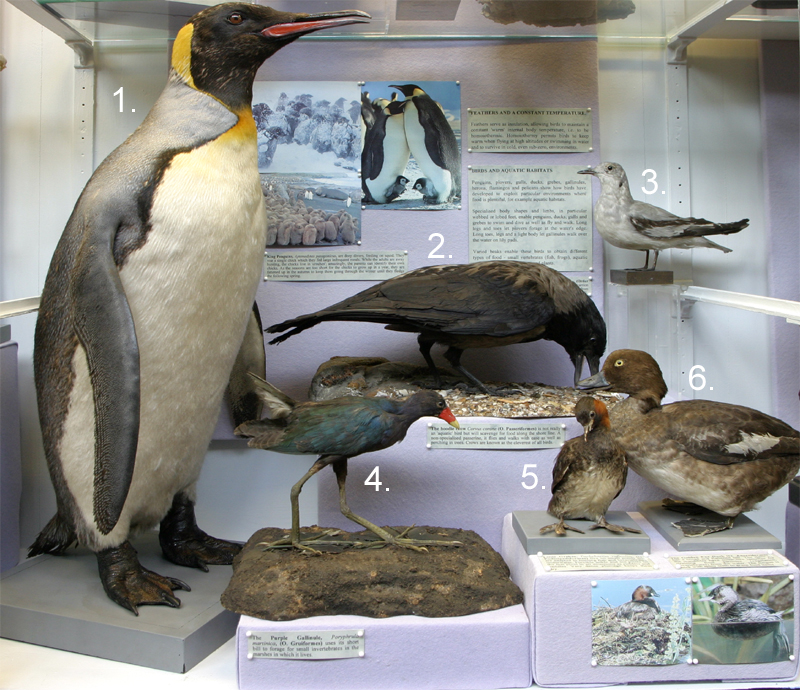
BIRDS AND AQUATIC HABITATS
Penguins, gulls, ducks, grebes, gallinules, herons, flamingos and pelicans show how birds have developed to exploit particular environments where food is plentiful, for example aquatic habitats. Specialised body shapes and limbs, in particular webbed or lobed feet, enable penguins, ducks, gulls and grebes to swim and dive as well as fly and walk. Long toes, legs and a light body let gallinules walk over the water on lily pads. Varied beaks enable these birds to obtain different types of food - small vertebrates (fish, frogs), aquatic and land invertebrates, algae and plants.

1. King Penguins, Aptenodytes patagonicus, (O. Sphenisciformes) are deep divers, feeding on squid. They rear a single chick which they fed large infrequent meals. While the adults are away hunting, the chicks live in 'creches'; amazingly, the parents can identify their own chicks. As the seasons are too short for the chicks to grow up in a year, they are fattened up in the autumn to keep them going through the winter until they fledge the following spring.
2. The hooded crow, Corvus corone cornix, (O. Passeriformes) is not really an 'aquatic' bird but will scavenge for food along the shore line. A non-specialised passerine, it flies and walks with ease as well as perching in trees. Crows are known as the cleverest of all birds.
3. The Little Gull, Larus minutus, (Order Charadriiformes) hunts for prey and carrion along the shore or inland. It plucks insects from the water or land with its slender forceps-like bills.
4. The Purple Gallinule, Porphyrula martinica, (O. Gruiformes) uses its short bill to forage for small invertebrates in the marshes in which it lives.
5. The Goldeneye Duck, Bucephala clangula, (O. Anseriformes) has a broad and flattened bill. The sides of the mandibles have comb-like lamellae for straining food particles (vegetation, invertebrates) from the water. The tongue is thick with spiny teeth to grasp food items.
6. Little Grebes, Tachybaptus ruficollis, (O. Podicipediformes) live on small ponds and are adapted to hunting fish and invertebrates underwater. Flexible ankle and toe joints let the feet pivot in all directions as rudders and paddles. Very dense plumage keeps them dry.






